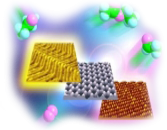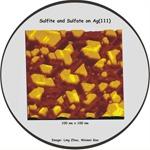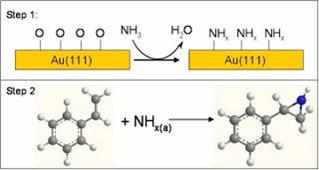- Past research
- Atomistic Studies of Reactions on Surfaces
- Formation of Carbon-heteroatom Bonds from Olefins on the Surfaces of Noble Metals
- Modeling the Dynamics of Surfaces Upon Absorption of Atoms and Molecules
- Molecular Interactions with Water on Metal Oxide Surfaces
- The Effect of Water on Reactions over Oxide Surfaces
- Using Au(111) to add NH to Olefins
Copyright © 2024 The President and Fellows of Harvard College | Privacy | Accessibility | Digital Accessibility | Report Copyright Infringement


 Ling Zhou and Robert J. Madix
Ling Zhou and Robert J. Madix